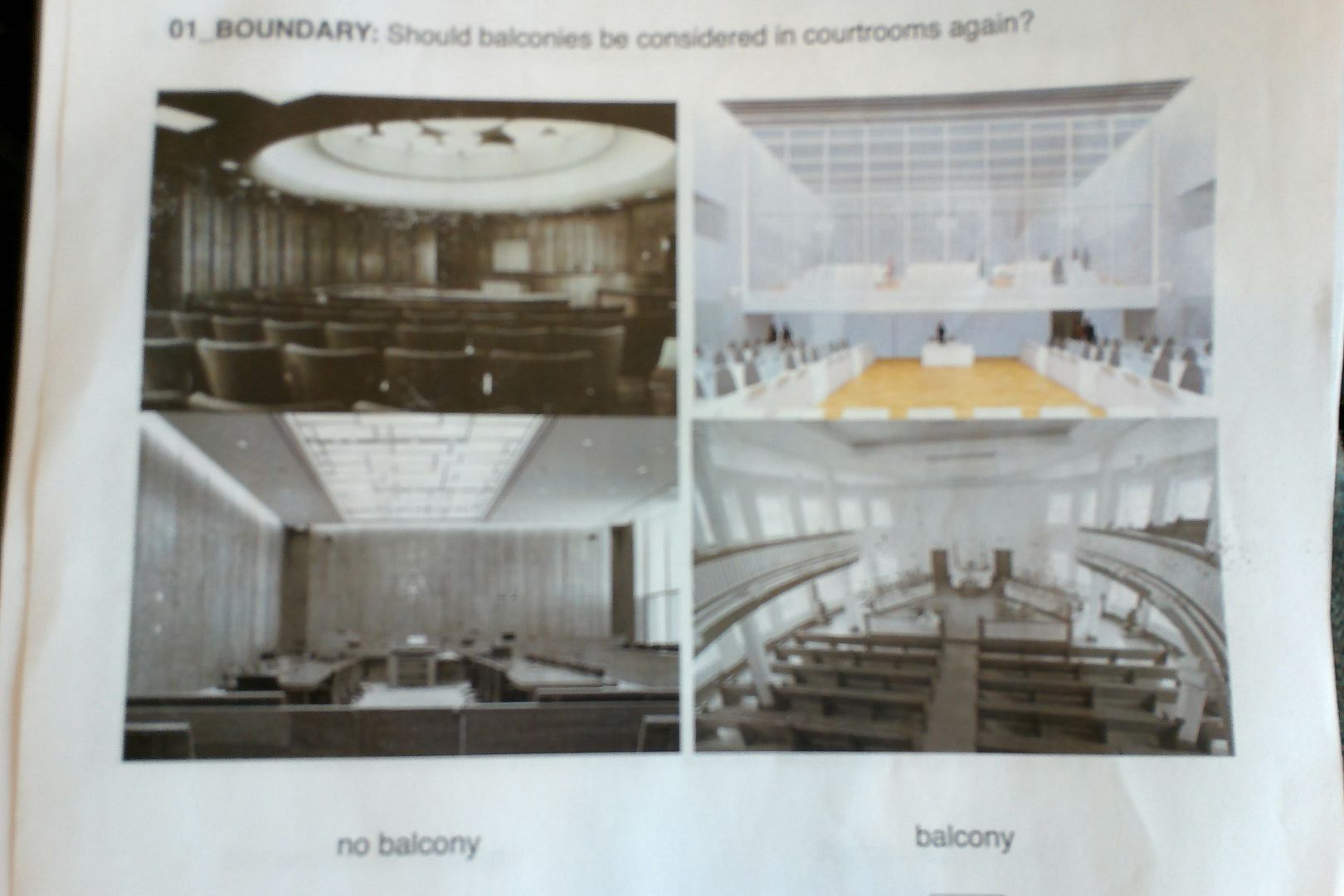
Courtrooms typically have high ceilings, and this is costly. Why didn’t we have balconies? Perhaps, balconies symbolize exclusion?
01 BOUNDARY: Ideas in the boundary between Public and Court Well; Hall vs Tiered Hall were explored. In fact, there are quite a few civic buildings, or assembly spaces utilizing balconies. You may want to look into Abingdon Town Hall; The Rolls, London, UK; Middlesex Sessions House, UK; Charlotte County Courthouse by Thomas Jefferson; Courthouse in Alexandria, VA; Old Montgomery County Courthouse, OH; Old Monroe County Courthouse, AL; Everrett M. Dirksen Courthouse has no balcony, but sketches by Mies van der Rohe show balcony options.
In the post 9-11 world, greater threat was perceived. There could be people throwing things into well; security issues are to be reviewed beyond the romantic aspect of balconies. Can this really work? Let’s look at the International Criminal Court in Netherlands with the glazed-in balcony. Inside the balcony, headsets allow visitors to hear the court proceedings in different language. The advantage here is that people coming in and out of the courtroom and broadcasting within the balcony would not interrupt the courtroom’s activities. Perhaps, balconies in some courtrooms can be employed for media or overflow for seating.
02 ACCESS: Should the corridors be reconsidered as celebrated spaces? Corridors can accommodate the functions beyond the pure circulation to the courtrooms.
03 ARRANGEMENT: Landhugger vs Tower - should courtrooms be next to each other or be stacked? Large courthouse facilities, such as the San Diego Courthouse Annex, are centralized and ceremonial. Thomas F Eagleton Courthouse in St. Louis has stacked courtrooms with split floor plates with the more efficient use of the 2-story spaces.
04 REFLECTION: Courthouses are not welcoming, with all the security screening requirements. Let’s study the architecture where public has the major engagement – can we learn anything from a theatre? A museum?
The presentation was led by Celeste F. Bremer from the U.S. District Court with the work from the courtsweb – a research database for the federal courthouses - from the College of Architecture in Georgia Institute of Technology.